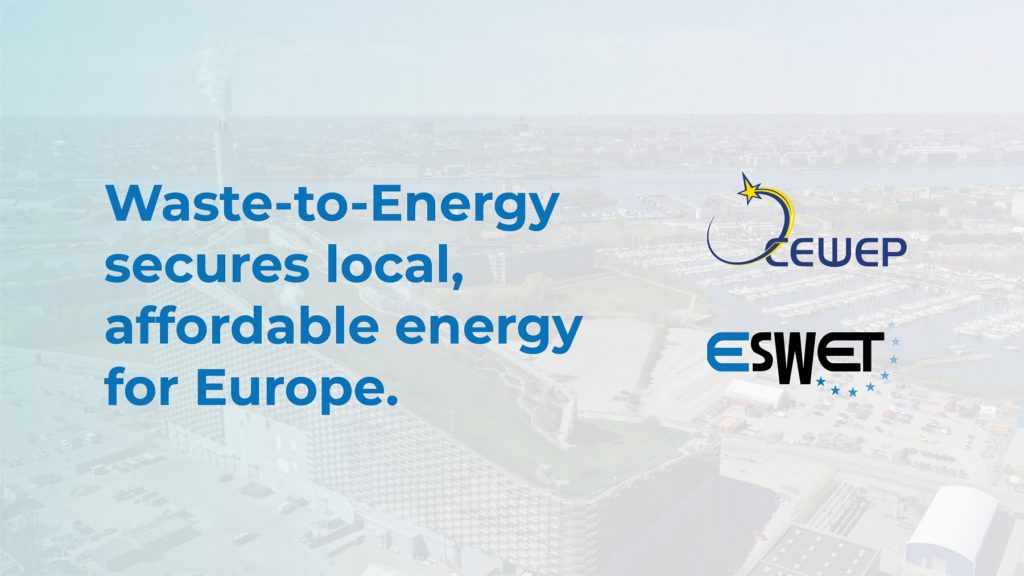Waste-to-Energy secures local, affordable energy for Europe

Waste-to-Energy has a significant potential to reduce our dependency on gas imports while participating in the efforts towards a carbon-neutral Europe.
Waste-to-Energy (WtE, or waste incineration with energy recovery) plants treat municipal and similar commercial and industrial waste which is not suitable for recycling and would otherwise be buried in landfills. This non-recyclable waste is then turned into energy for municipalities and industry.
Waste-to-Energy is a reliable source of non-intermittent energy
We welcome the RePowerEU Communication and the European Commission’s fast reaction to the challenging geopolitical situation and shifting energy markets. Additionally to the measures already mentioned in the Communication, we see more pillars for Europe to become self-sufficient and less dependent on fossil fuel imports.
European WtE plants provide a local source of reliable (baseload) energy that complements intermittent renewable energy sources such as wind or solar while at the same time treating non-recyclable waste. WtE plants in Europe generate enough electricity to supply almost 19 million people per year. Additionally, around 10% of Europe’s energy provided to District Heating networks comes from WtE. In cities with good district heating infrastructure in place, like Brescia, Malmö or Klaipėda WtE covers 50% or more of the heating needs.
The amount of primary energy generated by WtE in 2019 was equivalent to 13.8 billion m³ of natural gas. This corresponds approximately to 9% of the natural gas imports to the EU from Russia (155 billion m³ in 2021)[1].
By 2035 WtE plants could produce 189 TWh of useful energy per year[2], which would be equivalent to 19.4 billion m³ of natural gas in terms of primary energy.
Waste-to-Energy is a carbon sink
In addition to the CO2eq emission savings from fossil fuel substitution, WtE also mitigates greenhouse gases by diverting waste from landfills (source of disperse methane emissions) and recycling metals from the incineration bottom ash, the leftovers of the combustion process[3].
Furthermore, WtE’s potential for programmability and flexibility of energy production allows to explore many possibilities of sector coupling and industrial symbiosis. For example, some European WtE plants have already successfully contributed to decarbonisation of public transport through hydrogen production via water electrolysis as well as to grid balancing and energy storage.
Finally, numerous European WtE plants are exploring Carbon Capture Usage and Storage (CCUS) technologies[4], which have the potential to further reduce the carbon footprint of the sector or even to make it carbon negative.[5]
WtE is a consistent contributor for diversifying the European energy supply. The solutions that our sector delivers are part of a reliable energy infrastructure, while contributing to circular economy and decarbonisation efforts within the European Green Deal.
Therefore, we suggest that EU countries are supported in their use of WtE’s potential to reduce Europe’s dependency on gas imports by using waste that is not suitable for quality recycling for local energy generation. There is particularly high potential in countries, where reliance on landfilling is still high (e.g. Central Eastern and Southern Europe), where WtE would be a relatively low hanging fruit towards decarbonisation and achieving more self-sufficiency.
[1] International Energy Agency, How Europe can cut natural gas imports from Russia significantly within a year, 3rd March 2022
[2] See CEWEP’s energy fact sheet
[3] Please see CEWEP Bottom Ash Factsheet for more information.
[4] International Energy Agency GHG Program (IEAGHG), “CCS on Waste to Energy”, 2020-06, December 2020
[5] Parliamentary questions 3 February 2021, Subject: Contribution of waste-to-energy plants to reducing CO2 emissions, Answer given by Executive Vice-President Timmermans 28 April 2021